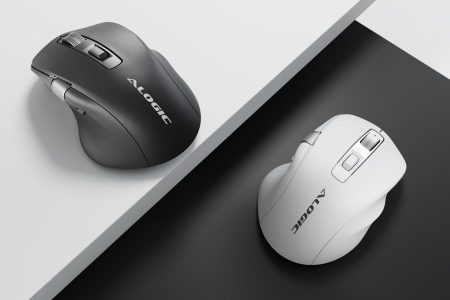He was in his early 40s when one morning he suddenly lost the ability to speak. He could not move the right side of his body. The married father of two young children made it to the hospital a few hours later and was diagnosed with a stroke involving the left side of his brain. Despite our best efforts to help him, he was no longer able to work and required around-the-clock care. He lost so much in a matter of seconds. I cared for that young man over 20 years ago during my residency training. We made the correct diagnosis, but the arsenal in our stroke toolkit for reversing his stroke was limited back then.
The options were quite different for John Fetterman. On the morning of May 13, 2022, his wife recognized the signs of stroke and immediately rushed him to the nearest hospital capable of treating stroke. Fetterman received a thrombectomy procedure to extract the blood clot that was causing the stroke. Four days later, he won the Democratic primary and now represents Pennsylvania in the U.S. Senate. Oh, how far we have come.
I have cared for thousands of patients who, like Senator Fetterman, suffered from strokes, placing significant emphasis on time, as every minute that a stroke goes untreated, 2 million neurons are destroyed. I use emergency clot-busting medication that dissolves the clot and restores the blood flow to the brain. I send them for pictures of the blood vessels of the brain to search for the actual clot. If a clot is identified in a large artery, I send them for mechanical thrombectomy, a procedure aimed at removing the clot and restoring blood flow to the brain.
Today, on World Stroke Day, we appreciate the many neuroscientists who worked in labs, meticulously unraveling the mysteries of stroke treatment. Equally deserving of recognition are the clinicians who translated this foundational research into clinical trials, providing compelling evidence of the effectiveness of these treatments. And, of course, we recognize the stroke patients who participated in the clinical trials to demonstrate how well these treatments work. They emerged from their ordeals heroes to the patients who came after them. They have made these lifesaving treatments possible.
It’s been a long road to get here. I recall during my residency training when specialists were first attempting clot extractions. They just couldn’t get it to work properly, and some patients were worse off after the extraction attempt than before. Years later, in 2015, clinical trials finally demonstrated the effectiveness of clot extraction for stroke, and thrombectomy is now considered the gold standard in the U.S.
Sadly, although this wonderful treatment has been shown to be safe and effective, only about 3% of people in the world have access to it. Many low and middle income countries do not have the specialists to perform the procedure, and racial and ethnic minorities in the U.S. are less likely to receive this treatment. That means if that same young Black man I saw more than 20 years ago had a stroke today he might not get this life-changing treatment and still be robbed of experiences like teaching his child to ride a bike or walk her down the aisle at her wedding.
The World Health Organization predicts that by 2030, strokes will become the leading cause of global disability. My colleague, Dr. Fawaz Al-Mufti, an interventional neurologist at Westchester Medical Center and senior member of the Core Executive Committee of Mission Thrombectomy of the Society of Vascular and Interventional Neurology, believes there is reason for optimism in addressing this alarming global health crisis and that mechanical thrombectomy offers a potent interventional tool with proven effectiveness, cost-efficiency and the potential for widespread global application.
Dr. Al-Mufti stated “there’s an urgent need to re-organize healthcare systems to prioritize stroke treatment, secure adequate funding, and build a well-trained workforce to make this treatment universally accessible.” He adds, “We call upon policymakers worldwide, especially in low and middle-income countries to direct their attention to this, because a cure for stroke exists.”
Dr. Shahid Nimjee, a vascular neurosurgeon at The Ohio State University Wexner Medical Center, concurred by saying “The task before us now is to make thrombectomy available to everyone suffering from a large vessel occlusion stroke. This includes expanding current systems of care, developing new technology to provide intervention irrespective of the location of the patient, and finally, dovetail innovation with cost to provide affordable devices across the globe.”
What To Do If You Suspect A Stroke
We can all work toward preventing stroke by eating healthy, regularly engaging in physical activity and other activities such as meditation and socialization to enhance our wellness and also getting quality sleep. Adults between the ages of 18 and 64 need at least seven hours of sleep each night, while adults 65 and older need seven to eight hours of sleep.
But if you witness someone having a stroke, the most important action to take is what Fetterman’s wife did: Make sure the patient is transferred, preferably using Emergency Medical Services, to the nearest emergency room that can offer clot-busting medication.
Once in the emergency room, clinicians will perform a series of tests. They’ll start with a scan of the brain. Based on the results of the scan, they may give the patient clot-busting medication. It has to be administered within the first four and one half hours, and within the first three hours for a subgroup of patients, which is why it’s essential to get to the hospital quickly. Doctors will also perform a scan looking at the brain arteries and blood flow to the brain.
If there is a blocked artery, the patient arrived early enough and there is no contraindication, then doctors will proceed to clot extraction. If the hospital doesn’t have this capability, the patient may be transferred to one that does. To confirm the location of the clot, doctors will perform an angiogram, which shows the blood vessels of the brain.
Once they identify the blocked vessel, they’ll extract the clot to restore circulation to the brain.
They’ll re-evaluate the patient after removing the clot. Some patients have immediate improvement, while others may have a delay in recovery.
By the time you’ve reached this point in the article, more than 20 people worldwide will have died from a stroke. It’s quite possible they could have been saved and resumed their regular daily activities if they received today’s life-changing treatment.
“Mechanical thrombectomy not only saves the patient’s life, but in a significant portion of those treated, allows them to regain their ability to walk, talk, and ultimately return to their lives again” said Dr. Nimjee, “it is perhaps the most rigorously tested procedure in medicine and has demonstrated benefit up to 24 hours after the onset of the stroke, irrespective of age, gender, presence of other illnesses or whether we see a small or large stroke on imaging prior to intervention.”
We have a lot to celebrate on this World Stroke Day when it comes to the progress we have made in treating strokes. “It is important to dedicate this World Stroke Day to the legacy of our resilient stroke survivors,” said Dr. Al-Mufti, “to telling the stories of a battle well fought against stroke, the challenges of an uphill recovery or even the bittersweet saga of refusing to yield.”
If a stroke survivor can make it to the U.S. Senate during his rehabilitation, there is no limit to what future stroke patients can achieve.
Read the full article here










